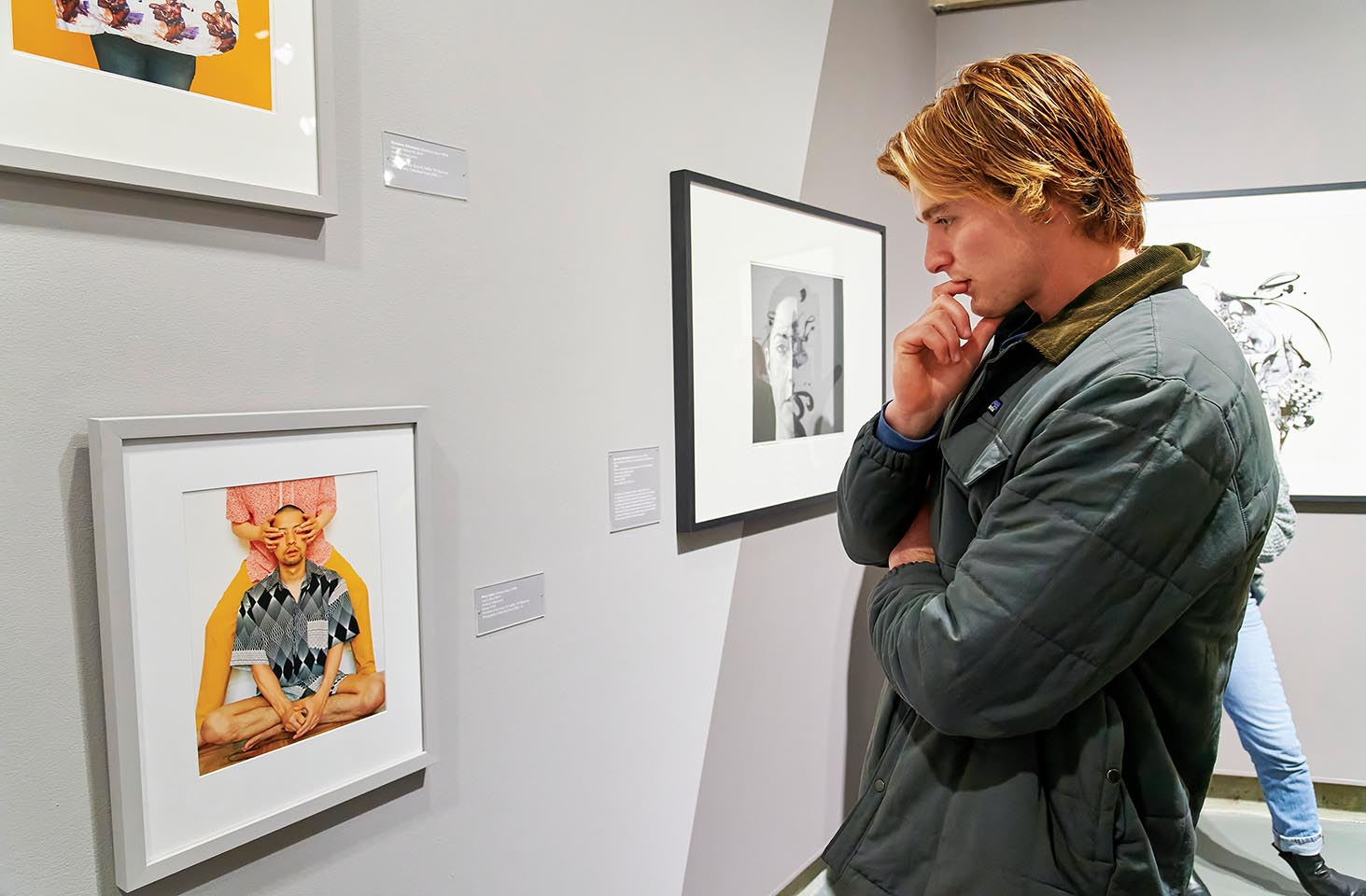A museum curating course creates a Picker Art Gallery show that encourages visitors to construct their own meaning.
The theory of Gestalt psychology argues that a person or object is seen as its whole, not just its parts. Students in Nick West’s Museum Curating (MUSE 300) course took their interest in this principle to the Picker Art Gallery this spring. Their exhibition, Gestalt: Greater Than the Sum, provided an intimate lens into the three students’ class discussions.
Students in MUSE 300 were fragments, too — they each shaped a part of their final exhibition. This process began in the classroom.
“In the course, we spend a lot of time on readings, so the students will get some theoretical perspectives,” says West, a co-director of University Museums who is also an art and art history research affiliate and curator of the Picker Art Gallery. “Then, we think about how we would apply some of those readings to the exhibition they work on concurrently throughout the semester.”
This work includes a look into the Picker Art Gallery’s collections, which comprises approximately 11,000 items. This was where curator Jacky Zhang ’25 found Gestalt Philadelphia, an image with a red-geometric print. The image has simple parts: red rhombuses that’d be simple enough to draw, but when these squares are oriented across the page, an illusion jumps out. The center of the image bulges, and the viewer notices the whole.
Zhang boils this principle down into a simple analogy: “When you see a deer on the road, your brain concludes that it is a deer, instead of four legs, two eyes, and a dotted body. Your brain will tell you [that] you are seeing something as a whole, not its parts.”
Several pieces in the exhibition call the viewer to look into themselves.
“We ended up talking about intersectionality,” says West. “Different aspects of individual identity make you who you are, and affect what you show or hide from the world at specific moments.”
To showcase identity interplay, curator Sam Fleming ’24 chose a series of photographs portraying the resistance of marginalized people.
“The photographs represent how multiple pieces of one’s identity intersect to create an authentic individual,” explains Fleming. “They provide snapshots of identities that weave the fabric of contemporary society.”
The exhibition itself mimics Gestalt’s part-to-whole principle. Contributions from Madison Motroni ’23 emphasized how individuals come together as fragments forming a community. And viewers are encouraged to form their own idea of what each piece means, altogether.
“By the end of the exhibition, we want our audience to construct the pieces that we picked out into their own, whole meaning,” says Zhang.

